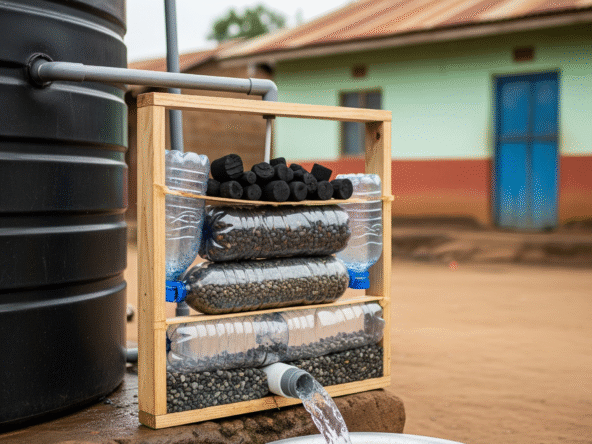In Kenya’s rental estates and semi-urban homes, water supply is often powered by electric pumps. But with frequent blackouts in areas like Ruai, Kitengela, or Githurai, landlords and homeowners face interruptions in water delivery. A well-designed solar backup system ensures your pump keeps running even when the national grid doesn’t.
This article walks you through how to install and benefit from a solar-powered water pump backup tailored for multi-unit rentals, estates, or off-grid homes.
Why Use Solar for Water Pumping?
Kenya receives high solar irradiance throughout the year, making solar power a natural and cost-saving solution for pumping water. Key advantages of adding solar backup to your pump system include:
- Continuous water supply during outages
- Lower operational costs (reduced KPLC dependency)
- Improved water access for tenants or residents
- Boosted property value and reduced tenant turnover
Landlords managing bedsitters or flats especially benefit from consistent water services, which are a key tenant retention factor.
Step 1: Evaluate Your Current Pump
Before designing your solar setup, determine the power rating and type of pump in use.
| Pump Type | Common Use | Power Range |
|---|---|---|
| Submersible borehole pump | Deep wells and boreholes | 1.0–2.2 kW |
| Surface pump | Ground tank to elevated tank | 0.5–1.5 kW |
| Booster pump | Pressure for upper floors | 0.3–1.0 kW |
You’ll size your solar system including panels and inverter based on these requirements. Reference: Sizing Pumps for Irrigation and Water Supply
Step 2: Choose Your Solar Backup Setup
There are three main configurations for solar pump backups:
1. Hybrid Solar + Grid System
- Prioritizes solar during the day
- Switches to KPLC when solar is unavailable
- Best for areas with irregular outages
2. Off-Grid Solar System with Battery Backup
- Fully independent from KPLC
- Requires solar panels, batteries, and a reliable inverter
- Ideal for remote homes or estates
3. Direct PV Pumping System (Sunlight Only)
- No battery storage
- Runs the pump only when the sun is out
- Works for non-critical tank refill operations
This is especially helpful in off-grid farm planning.
Step 3: Must-Have Components
To install a solar backup for water pumping, you’ll need:
- Solar panels (sized to deliver 1.5x pump wattage)
- Hybrid inverter or MPPT controller
- Batteries (for night or cloudy operation)
- Float switch to control auto-refill (Tank Refill Automation)
- Low-level shutoff switch to protect dry tanks (Emergency Shutoff Guide)
Step 4: Communal Layout for Multi-Rental Compounds
A basic rental water distribution system using solar should include:
- Ground tank (e.g., 5,000L Kentank or IBC tank)
- Rooftop-mounted solar panels
- Daylight or battery-powered booster pump
- Overhead tank for gravity-fed distribution
- Overflow alarm to prevent spillage
This can be integrated into your broader central tank system design.
Step 5: Budget and Payback Timeline
| System Type | Estimated Cost (KSh) | Average Lifespan |
|---|---|---|
| Hybrid Backup (1kW system) | 150,000–200,000 | 10–15 years |
| Full Off-Grid w/ Batteries | 250,000–400,000 | 7–12 years |
| Direct PV Pump System | 100,000–150,000 | 10+ years |
ROI Insight: Most setups recover their cost in 3–5 years, especially in compounds that:
- Previously relied on diesel generators
- Face frequent blackouts
- Charge higher rent for uninterrupted water access
Final Tips for Smooth Operation
- Work with certified solar technicians to ensure proper sizing and wiring
- Use DIY tank stands for elevated gravity systems
- Add gravel overflow beds to manage spills around tanks
- For buildings with low water pressure, consider gravity-fed designs


